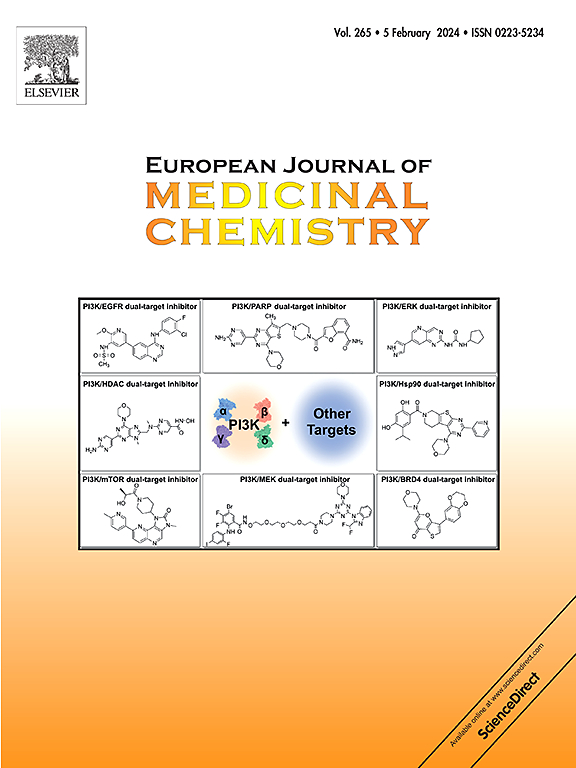用于脑内α-突触核蛋白聚集体成像的偶氮香豆素衍生物的合成与鉴定
IF 6
2区 医学
Q1 CHEMISTRY, MEDICINAL
引用次数: 0
摘要
本文章由计算机程序翻译,如有差异,请以英文原文为准。


Synthesis and identification of azocoumarin derivatives toward imaging of α-synuclein aggregates in the brain
To identify α-synuclein aggregation in synucleinopathies is still challenging, due to the lack of specific probes for α-synuclein aggregates with efficient brain uptake. In this work, compact molecules based on coumarin scaffold were synthesized and evaluated for detection and bioimaging of α-synuclein aggregates in the brain. Among the developed compounds, azocoumarin 5 containing push-pull electronic architecture featured selective fluorescence enhancement towards α-synuclein aggregates in comparison to other β-sheet protein species (β-amyloid, tau). In addition, azocoumarin [18F]Cou-NNF was succesfully developed, and demonstrated its potential as radiotracer for imaging brain α-synuclein aggregates, owing to its favorable affinity for α-synuclein aggregates accompanied with efficient brain uptake and little defluorination in vivo. Overall, compact azocoumarin provides an effective lead structure for developing α-synuclein probes, and N=N bond shows promise in enhancing selective affinity for α-synuclein aggregates.
求助全文
通过发布文献求助,成功后即可免费获取论文全文。
去求助
来源期刊
CiteScore
11.70
自引率
9.00%
发文量
863
审稿时长
29 days
期刊介绍:
The European Journal of Medicinal Chemistry is a global journal that publishes studies on all aspects of medicinal chemistry. It provides a medium for publication of original papers and also welcomes critical review papers.
A typical paper would report on the organic synthesis, characterization and pharmacological evaluation of compounds. Other topics of interest are drug design, QSAR, molecular modeling, drug-receptor interactions, molecular aspects of drug metabolism, prodrug synthesis and drug targeting. The journal expects manuscripts to present the rational for a study, provide insight into the design of compounds or understanding of mechanism, or clarify the targets.

 求助内容:
求助内容: 应助结果提醒方式:
应助结果提醒方式:


